Merinka/iStock/GettyImages
Kangaroo Loin Is Low in Fat and Easy to Prepare
Game meats tend to be much leaner than farm-bred beef, and kangaroo is no exception. When cooked properly, kangaroo loin is comparable to a beef tenderloin in both taste and tenderness. But, because it is so low in fat, kangaroo loin can be dry. The key to cooking kangaroo loin lies in a simple, two-part process. Marinating or brining your kangaroo loins before cooking them will add flavor and tenderize the meat. Searing them quickly in a very hot pan creates a crisp outer crust and juicy, tender interior.
If You Choose to Marinate
Mix together your acidic liquid, such as orange juice or dry wine, and your choice of oil. The proportions don't have to be exact, but for every 1 cup of acidic liquid, add about 1 cup of oil. Sprinkle in whatever seasonings your recipe, or imagination, calls for. Kangaroo loin resembles beef tenderloin, so almost any beef seasoning will do, from thyme and rosemary through chili powder and cilantro to ginger and soy sauce. Whisk the acid, oil and seasonings together until the marinade is completely blended and slightly thickened.
Place your kangaroo tenderloins into a plastic zipper bag or container with a lid. Pour the marinade over the meat. Turn the meat with tongs so that it is thoroughly coated with the marinade.
Close the bag or cover the container. Set it into the refrigerator overnight. Most meats turn mushy after more than about 4 hours of soaking, but kangaroo loin is so lean it can use the extra time.
Drain the liquid off of the meat, and discard the used marinade.
If You Choose Brining
Place 1 quart of cold water for every two tenderloins into a large bowl. Add 1/3 cup of kosher salt and 1/8 cup of sugar. The proportions don't have to be exact.
Place your tenderloins into an airtight container or plastic zipper bag. Carefully pour in the brining solution. Turn the kangaroo loin so that all the pieces are thoroughly coated, and place the container into the refrigerator for 3 to 4 hours.
Remove the container from the refrigerator. Lift the meat out with tongs, and discard the marinade.
Cooking
Heat a large skillet over medium-high heat until a drop of water sizzles and dances when flicked into the pan. A cast-iron skillet is best for this, but anything other than a nonstick pan works well.
Lightly coat the skillet with olive, canola or vegetable oil. Let the oil heat until it begins to shimmer and you can smell its scent.
Carefully add your kangaroo loins, one at a time. Stand back, because any marinade or brine sticking to the meat might pop and splatter you with hot oil.
Cook the kangaroo loins for 3 to 4 minutes per side, depending on thickness. Insert an instant-read thermometer into the thickest part of the thickest loin. Your kangaroo loin is done rare when it reaches 135F, though 145F is ideal for food safety.
Related Articles
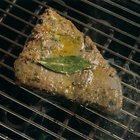
How to Marinate Ahi Tuna
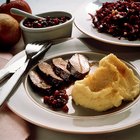
How to Make a Venison Rub
Easy Pork Chop Marinade Recipe

How to Marinate a Top Round Roast

How to Slow Cook an Eye of Round Roast ...
Easy Baked Pork Chops Recipe
How to Cook Double Thickness Rib Lamb ...

Perfect Way to Cook a Pork Chop in the ...
How Long Do I Soak Lamb in Vinegar ...

Can You Marinate a Pork Shoulder ...

How to Cook Alligator Steak

The Best Way to Cook Less Tender Cuts ...

How to Cook an 8- to 10-Pound Beef ...
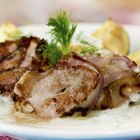
How to Cook Pork Tenderloin in a ...
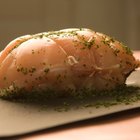
How to Brine Pork Loins
How to Cook Beef Chuck Underblade
Can You Make a Stir-Fry With a Sirloin ...

How to Cook Pan Fried Deer Tenderloin
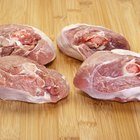
How to Cook Boneless Beef Shank

How to Cook Corned Beef Without Being ...
References
Resources
Writer Bio
Brynne Chandler raised three children alone while travelling, remodeling old homes, taking classes at the Unioversity of California Northridge and enjoying a successful career writing TV Animation. Her passions include cooking, tinkering, decorating and muscle cars. Brynne has been writing fun and informative non-fiction articles for almost a decade. She is hard at work on her first cookbook, which combines healthy eating with science-based natural remedies.